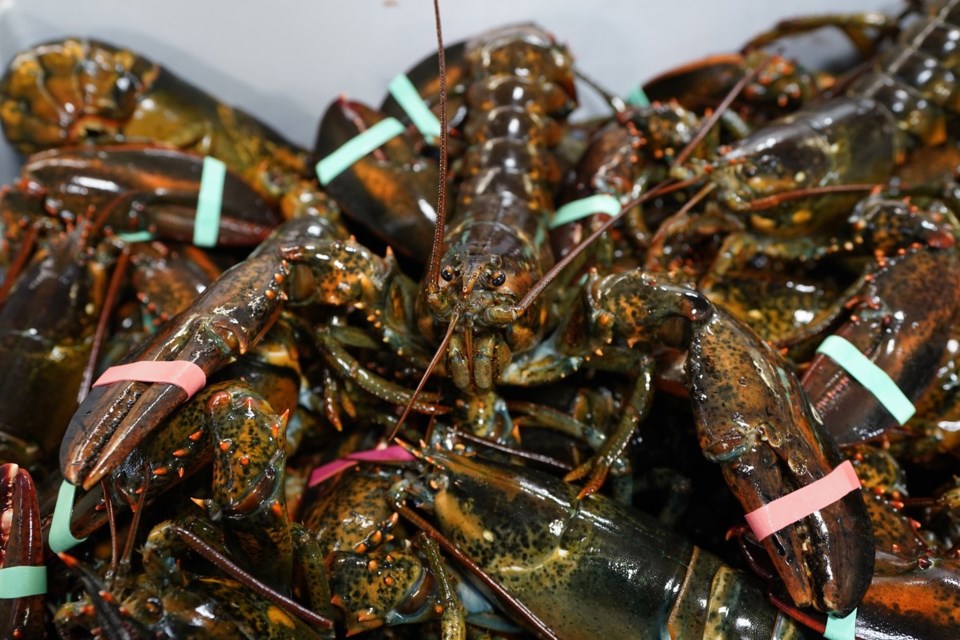PORTLAND, Maine (AP) — Fishing regulators are delaying a plan for stricter fishing rules amid concerns about a decline in baby lobsters in the warming waters off New England.
The regulators are looking to that fishermen need to abide by a larger minimum size for the lobsters they trap. The change is only 1/16th of an inch or 1.6 millimeters, but regulators have said it will help preserve the population of the valuable crustaceans, as many small lobsters will need to be tossed back to the ocean.
Some fishermen have argued the change is unnecessary and will be disruptive to one of the country's most lucrative seafood industries when it is already stressed by warming waters, surging expenses and whales. They've argued for the new rules to be delayed or scrapped.
The Atlantic States Marine Fisheries Commission has said the minimum size must be changed because of a recent decline of more than 35% of the young lobster stock in the Gulf of Maine, a key fishing ground. But the commission voted Monday to push back the implementation of the change from Jan. 1 to July 1, 2025.
Maine fishermen, who catch most of the country's lobster, remain opposed to the size increase, said Kevin Kelley, a spokesperson for the Maine Lobstermen's Association. However, the delay will help prevent U.S. fishermen from being put at a competitive disadvantage with Canada, which also has a large lobster fishing industry, he said.
“We are hopeful that this will provide more time to address unintended consequences of an increase, specifically the fact that unless Canada also changes its gauge size, Canadian lobstermen will still be able to catch smaller lobster,” Kelley said.
The size change applies to the Gulf of Maine, where commission officials have said the stock when comparing 2020-22 to 2016-18. Scientists have cited the as a potential stressor for lobsters.
The revelation about the decline in young lobsters surprised many in the industry, and some fishermen have questioned the data. Rep. Jared Golden, a Democrat who represents the Maine coast in Congress and has advocated to block the new rules, called the data “outdated.”
The concern about a drop in young lobsters arrived at a time of relative prosperity for the lobster industry. The value of U.S. lobster can fluctuate considerably from year to year, and topped $900 million for the first time in 2021. It remained well over $450 million, which is still a historically high number, last year.
The decision to postpone the size requirements will protect the lobster population while also taking into account the market concerns raised by members of the industry, said Patrick Keliher, who is chair of the Atlantic States lobster board as well as commissioner of the Maine Department of Marine Resources.
“My hope is that the benefits of the gauge change combined with the increase in young-of-the-year lobsters we’re seeing in the settlement survey will result in a healthy, sustainable resource for future generations,” Keliher said.
Patrick Whittle, The Associated Press




